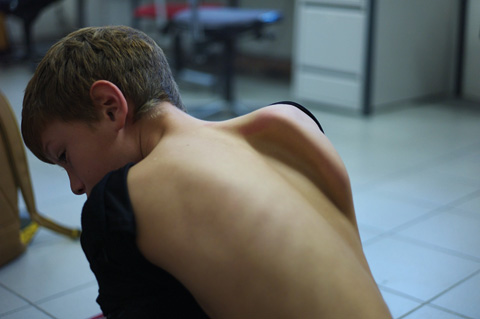Arquivo
2013
Gustav’s Wing

Danh Võ (Bà Ria, Vietname, 1975) concebeu esta exposição tomando em consideração o lugar onde ela se inscreve. We The People, ambicioso projeto iniciado em 2011, que consiste na recriação da Estátua da Liberdade em inúmeros fragmentos à escala 1:1, é o núcleo duro da exposição. Danh Võ ficou fascinado ao descobrir que aquela estátua é composta por uma fina camada, uma pele, suportada por uma estrutura interior; interessou-lhe o contraste entre a ideia de fragilidade assim revelada e a monumentalidade da estátua. Os fragmentos da Estátua da Liberdade estabelecem uma relação estreita, uma correspondência direta até, com pequenas esculturas em papier mâché de fragmentos do corpo de um adolescente (nomeado no título da exposição) e com os fragmentos de uma figura em madeira de Cristo crucificado, datada do século XVIII. Outro dos eixos conceptuais da exposição é definido por uma das obras mais emblemáticas de Danh Võ: a cópia manuscrita de uma carta enviada por um missionário jesuíta ao pai, no século XIX, antes da sua decapitação – uma carta que tem sido regularmente copiada (e recopiada) por Phung Võ, pai do artista. Através da conjugação destas e de outras obras recentes, Danh Võ constrói uma complexa rede de relações, por vezes invisíveis numa primeira aproximação, em que o tema da condição humana, da sua fragilidade e mortalidade, emerge como leitmotiv.
